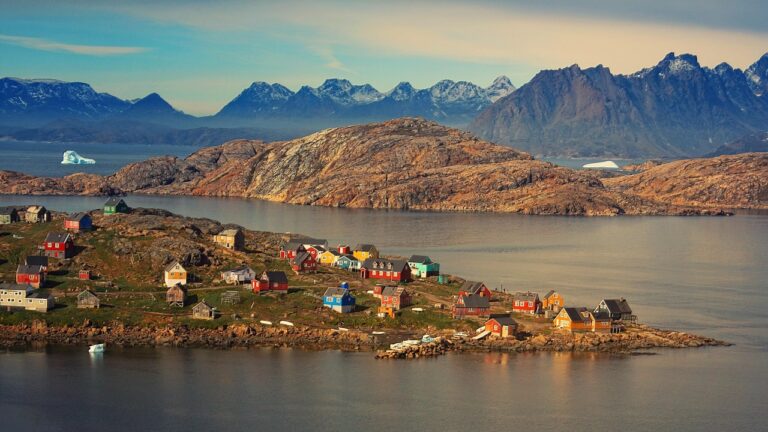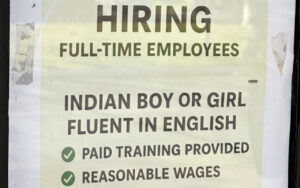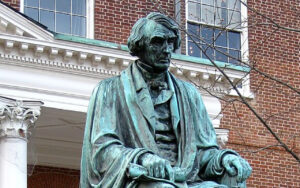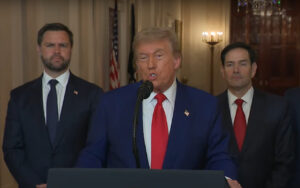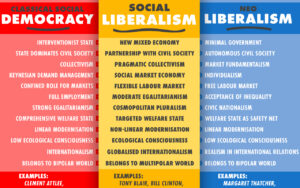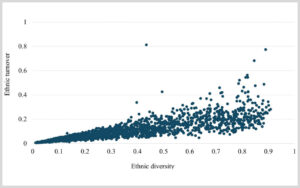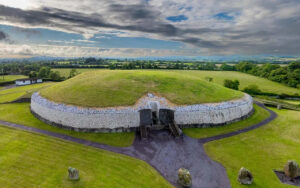American Empire is upon us. President-elect Donald Trump has spoken in recent weeks about several potential new territorial additions, including all of Canada (as the 51st state). The one he is most serious about is clearly Greenland. Rather amusingly, he even refused to rule out military action to take it. Eldest son Donald Trump Jr. visited recently, taking the good word of MAGA to the Danish territory. King Frederik X recently changed his coat of arms to make his claim to Greenland more prominent, and the European Union is reportedly outraged at the incoming president’s threats. One can imagine the Trump White House laughing off such bluster. If America truly wanted Greenland, it would get it.
There are many good reasons to acquire Greenland. Arctic shipping lanes will be increasingly important in the future. Greenland contains natural resources that the American economy needs, and we could exploit them more effectively than Denmark. In geopolitical terms, if America does not secure access, a rival most likely will. There is also a more mystical, and even metaphysical, justification. America is fundamentally a frontier nation. The quest for expansion, uncontrolled space, and even empire is good for its own sake. In Suicide of the West, James Burnham said that while it is crude simply to look at borders to judge the rise and fall of nations, it is still meaningful.
Yet what is a nation? White advocates know that the interests of white Americans and those of the geopolitical entity called “the United States” are not the same thing. It is debatable whether we can call America “our” country in the same way our ancestors would have. It may also seem absurd to talk about expansion when there are vast swaths of American territory that are already essentially lost to Western Civilization. Mass deportations of illegals, restoring freedom of association, and establishing basic norms such as an official national language seem far more important than planting the flag in the Far North.
Of course, there is no reason all these things could not be done at the same time, and the efforts could be mutually reinforcing. The pursuit of Greenland is well within the American tradition, and the United States has repeatedly tried to buy the territory. President Trump also broached buying Greenland during his first term, though critics essentially laughed. People are taking it far more seriously this time.
However, the American tradition is expansion by the same people. A few unfortunate tangents such as the Philippines notwithstanding, the history of the United States is the history of a white, English-speaking people conquering the continent and displacing rivals, not lording over resentful non-whites. In those places where we have departed from this tradition, from Indian reservations to territories such as Puerto Rico, we continue to pay for it. This is the problem with the charge of “white supremacy” — white advocates could say that it is not “racist” enough. Whites gain nothing from ruling over non-whites, spending our money, time, and energy to increase their population and living standards and getting only resentment in return. We may be setting ourselves up for more of the same with Greenland.
Greenland may technically be a Danish territory, but it is not Norse. About 89 percent of the population is Intuit. The Thule Intuit population arrived in Greenland around 1000 AD, about the same time as the Norse settlers, represented most notably by Erik the Red. However, they stayed, while most of the Norsemen left. The Danish claim to Greenland was not truly resurrected until the 18th century, when a missionary, Hans Egede, re-established contact between Greenland and the Norse, who by then had been thoroughly Christianized. He founded Godthaab, the capital, now called Nuuk. The Danish granted Greenland home rule in 1979, but this did not reconcile the Intuits and the Danes, and the changing of the name of the capital was just one example.
Denmark gives Greenland more than half of its public budget every year with a block grant of about $511 million. Total subsidies from Denmark to Greenland each year are about $17,500 for each of the territory’s mere 56,000 residents. This does not include what the Kingdom spends on defense, an amount that was recently increased by about $1.2 billion. Greenlanders are also full citizens of Denmark and enjoy the services that come with being part of one of the world’s Nordic welfare states.
Nonetheless, Greenland wants independence, and many in Greenland welcome American attempts to break it away from Denmark as a means to that end. Of the 31 members of the Greenlandic parliament, 26 are from parties that support independence. One model being advanced is “free association,” which would allow Greenland to be independent but supposedly keep receiving a free ride from Europeans. Despite this embarrassing dependence, Greenland Prime Minister Mute Egede continues to posture like some freedom fighter. “It is now time to take the next step for our country,” Mr. Egede said in a New Year’s speech. “Like other countries in the world, we must work to remove the obstacles to cooperation — which we can describe as the shackles of the colonial era — and move on.” He also has denounced attempts by the United States to buy Greenland. “We must not lose our long struggle for freedom,” he said. America is useful to pro-independence Greenlanders now, but that does not mean they will serve our ends later.
A 2019 poll found more than two-thirds of Greenlanders support independence. Patriot Polling, which has a questionable reputation, found that 57.3 percent of those in Greenland want to join the United States, with just 37.4 percent saying no. The poll had only 400 respondents. Donald Trump Jr. says Greenlanders “love” his father and want to join the United States. Most Americans reportedly do not want the United States to acquire Greenland, but it is doubtful there would be any real opposition. Whatever Denmark spends on Greenland is nothing compared with what America wastes every year on far more foolish projects.
However, while many Americans might rejoice to see the flag advance, whites may have second thoughts if all we incorporate is yet another resentful population. Denmark’s efforts at “decolonization,” taken in the aftermath of World War II, seem to have garnered only resentment. While Greenland enjoys autonomy and subsidies, this is not enough.
For example, the Harvard Kennedy School touts an article from a seemingly bitter Greenlander as part of the “International Workshop on Indigenous Youth Leadership for the Changing Arctic.” The author, Lynda Lyberth Kristiansen, blames the lack of Greenlandic language education at higher levels for the high number of drop-outs. “[I]f higher education in Greenland is taught fully in Greenlandic, and Indigenous knowledge is implemented more in their education, there would be many more Inuit motivated to thrive in the education system,” said Miss Kristiansen. “This is how we take back our identity as a people, not just following the Eurocentric path from our colonial power and what outsiders thought was ‘good for us.’”
She continues:
Indigenous languages are foundational to identity, cultural heritage, and to our future as a people. By decolonizing our mindset and making more space in the educational system for our Indigenous languages, we strengthen our sense of who we are in our own terms, and instead of (mis)understanding ourselves in other cultures’ terms, we develop frameworks of our own. For example: still today in Danish textbooks the coming of Danish rule is described as “in the best sense” and the pre-contact Greenlanders are portrayed, romantically, as being “of the land” or “in harmony with the land.” This view does a disservice to us, as a people who developed a sophisticated set of technologies that enabled our travel to Greenland over hundreds of miles of Arctic waters, and then to survive the harsh conditions. It over-credits the Danish and hides their economic motives for wanting access to our natural resources, minimalizing the history of their colonial power. A truer view — the one we should teach in any Indigenous-language version — is this: Greenlanders are innovators.
We need to extend our role as innovators into being the shapers of our own educational system, taking Sámi University [in Norway] as an inspiration in terms of teacher training and curriculum development. The sooner we fund a pilot program, the better.
Such steps are not only to our advantage, they’re our right: the Danish have an obligation to support and fund.
The Danes did try to raise Intuits as Danes after World War II, with an initial attempt actually to postpone teaching in Greenlandic. In one notorious case, Intuits were separated from their families and sent to Denmark to be raised as Danes. However, that did not work, and is another example in the long history of white people refusing to understand that only white people can be white people. The misguided attempt at assimilation, including that so-called “Little Danes” experiment, is now more fodder for a victimhood culture. The Danish government officially apologized in 2022.
On June 21, 2020, amid calls for Greenlanders to “decolonize our minds,” a statue of missionary Hans Egade was vandalized with the word “Decolonize” written in red paint. Seemingly gluttons for punishment, Denmark set up a joint commission with Greenland in 2022 to investigate claims of wrongdoing in its “colonial history,” and to publicize the results. A burgeoning academic subculture of “decolonization” is already underway, with texts and lectures blaming Denmark for Greenland’s high suicide rate and alcoholism. Incorporating Greenland into the United States would no doubt supercharge that movement.
The truth is simple: We want Greenland; we do not want Greenlanders. However, the United States could probably absorb another troubled, but relatively small, population of non-whites complaining about white racist Americans. The Greenlanders themselves would have to get to the back of a very long line. It would not break us, and the benefits might well outweigh the costs. This is not an existential issue for white advocates. However, the costs should not be ignored.
We would be incorporating an overwhelmingly non-white population whose resentment and dependence would be transferred from Denmark to the United States. It is likely America will be able to get everything it wants from Greenland without the trouble of having to babysit Intuit for the rest of our national existence. To make America great again ultimately means making America white again. Taking on more than 50,000 Inuits would not help in that mission, especially with a highly developed DEI framework in government, business, and academia already in place. I am not opposed to Empire, which I regard as inevitable, but America was built by territorial acquisition by our people, not by taking on yet more dependents. We have learned to our regret that non-whites cannot assimilate and will never be Americans other than with an asterisk and a hyphen.
Still, if the Stars and Stripes flies over Thule, I will be happy to visit. There is something to be said for having a frontier again.
This article was originally published by American Renaissance and is republished by The Noticer with permission.
